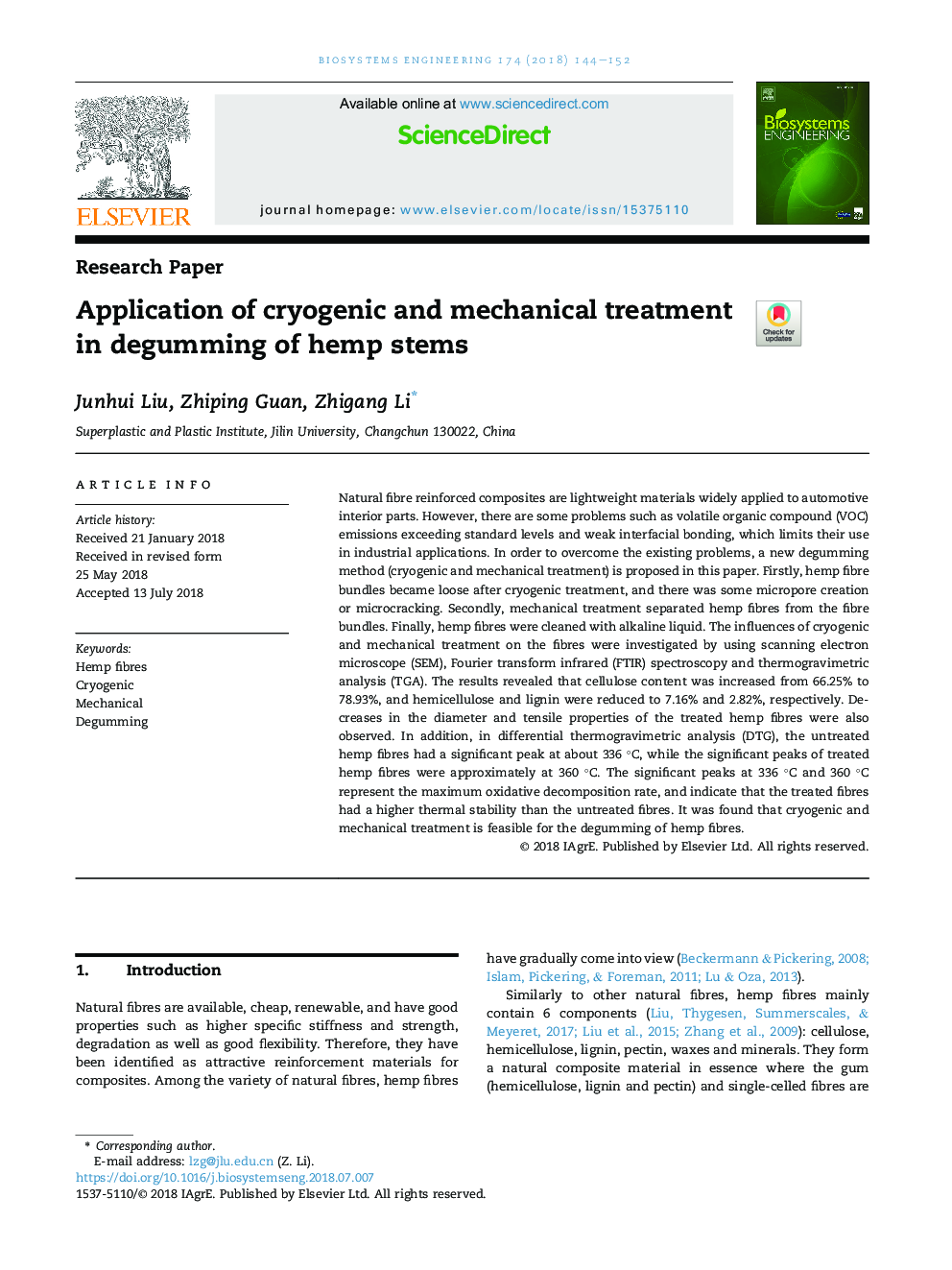| Article ID | Journal | Published Year | Pages | File Type |
|---|---|---|---|---|
| 9953569 | Biosystems Engineering | 2018 | 9 Pages |
Abstract
Natural fibre reinforced composites are lightweight materials widely applied to automotive interior parts. However, there are some problems such as volatile organic compound (VOC) emissions exceeding standard levels and weak interfacial bonding, which limits their use in industrial applications. In order to overcome the existing problems, a new degumming method (cryogenic and mechanical treatment) is proposed in this paper. Firstly, hemp fibre bundles became loose after cryogenic treatment, and there was some micropore creation or microcracking. Secondly, mechanical treatment separated hemp fibres from the fibre bundles. Finally, hemp fibres were cleaned with alkaline liquid. The influences of cryogenic and mechanical treatment on the fibres were investigated by using scanning electron microscope (SEM), Fourier transform infrared (FTIR) spectroscopy and thermogravimetric analysis (TGA). The results revealed that cellulose content was increased from 66.25% to 78.93%, and hemicellulose and lignin were reduced to 7.16% and 2.82%, respectively. Decreases in the diameter and tensile properties of the treated hemp fibres were also observed. In addition, in differential thermogravimetric analysis (DTG), the untreated hemp fibres had a significant peak at about 336 °C, while the significant peaks of treated hemp fibres were approximately at 360 °C. The significant peaks at 336 °C and 360 °C represent the maximum oxidative decomposition rate, and indicate that the treated fibres had a higher thermal stability than the untreated fibres. It was found that cryogenic and mechanical treatment is feasible for the degumming of hemp fibres.
Keywords
Related Topics
Physical Sciences and Engineering
Engineering
Control and Systems Engineering
Authors
Junhui Liu, Zhiping Guan, Zhigang Li,
